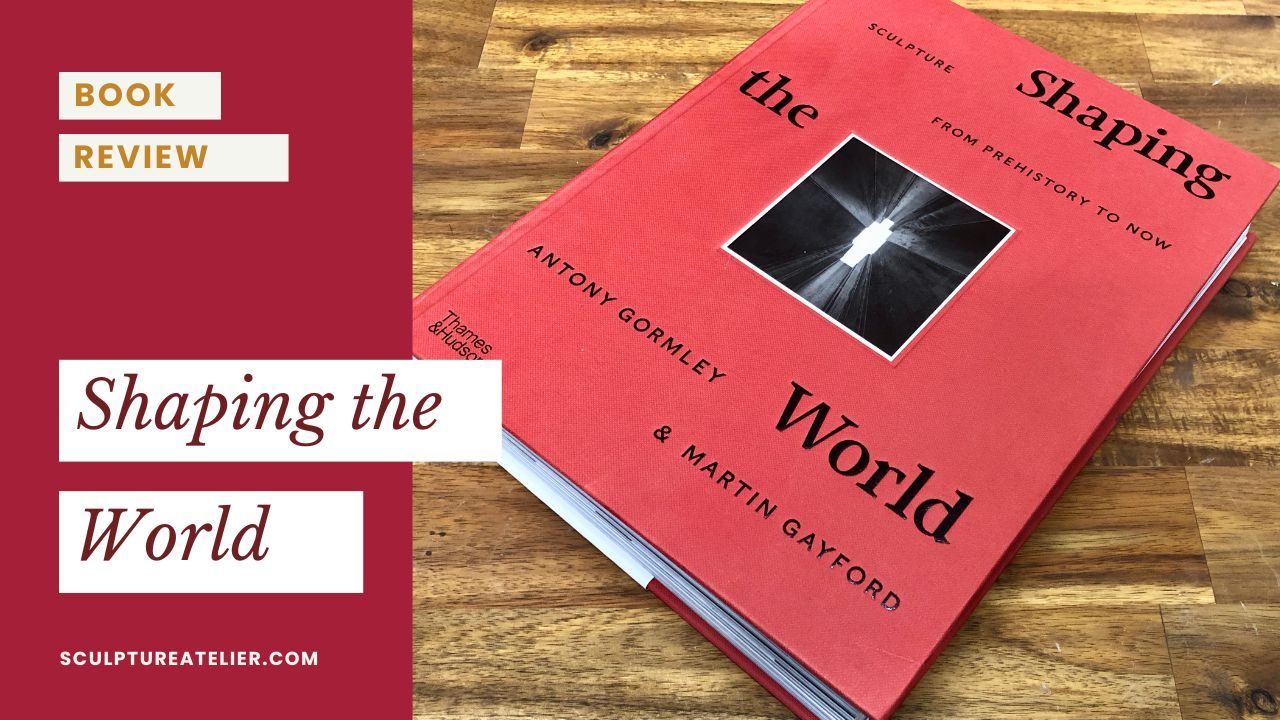How to Sculpt a Portrait in Clay (Beginners Guide)
Have you always wanted to learn how to sculpt a portrait in clay?
Whether you are a complete beginner or an artist in another medium, this guide will help you get started with traditional portrait sculpting in clay. Make sure to watch the video above!
In this Portrait Sculpting Guide for Beginners:
- Building the Armature
- Adding the Clay
- Shaping the Basic Form
- Adding the Skull Structure
- Refining the Likeness
Introduction to Portraiture
Creating a lifelike portrait in clay is a rewarding artistic endeavor that requires a blend of technical skill and creative vision.
This guide, accompanying the video timelapse, will walk you through the essential steps to sculpt a portrait in clay, from building a simple armature to refining the final details for an individual likeness.
Step 1: Building the Portrait Armature
The first step in sculpting a portrait in clay is constructing a sturdy armature. The armature acts as the base for your sculpture, providing the necessary support for the clay.
Start with a basic framework made of a vertical post attached to a board, with a metal loop. Newspaper is added to represent the general proportions of the human head.
This step is helpful as it forms the foundation for the entire sculpture, as well as makes it easier to fire the sculpture later.
Tips for Building an Armature:
- Use measurements to ensure the correct height of your post.
- Use aluminum armature wire for a strong and flexible metal loop.
- Keep the paper head slightly smaller than the intended size of the portrait to allow for the addition of clay.
Step 2: Adding the Clay
Once your armature is ready, it's time to start adding clay. Begin by applying a layer of clay over the entire form, ensuring it adheres well and forms a solid base.
Tips for Adding Clay:
- Use soft, pliable clay that is easy to manipulate.
- When adhering slabs of clay, use the “spray and score” technique.
- Add clay in small amounts to maintain control over the shape.
Step 3: Shaping the Basic Form
With the clay applied, you can now start shaping the basic form of the head. This stage is about establishing the overall mass and volume of your sculpture. Pay attention to the major planes and masses of the head, including the oval of the cranium and the wedge of the jaw.
At this stage, focus ONLY on the large shape and resist the temptation to add any details. This will help you achieve the correct proportions and establish the overall structure of the portrait.
Tips for Shaping the Basic Form:
- Use calipers to measure and ensure correct proportions.
- Continuously check your work from different angles.
- Regularly step back and assess your work from a distance to ensure accuracy.
Step 4: Adding the Skull Shape
Next, refine the underlying skull shape to give your portrait a realistic foundation. Push into the clay to form the orbits of the skull, temporal ridge and cheekbones.
This step is crucial for achieving a lifelike representation, as the skull significantly influences the surface features of the face.
Tips for Adding the Skull Shape:
- Study skull models or diagrams for reference.
- Look from above and below to match the volumes on both sides.
- Use calipers to measure and ensure your height, width and depth are accurate.
Step 5: Refining the Likeness
The final step is blocking out the specific shapes of the portrait and slowly refining the details to achieve an individual likeness. This involves sculpting the finer features such as the eyes, nose, mouth, and ears.
Pay close attention to the unique characteristics of your subject, referencing the contour line from all angles as you turn your sculpture. This stage requires patience and a well-trained eye to capture the essence of the person you're sculpting.
Tips for Refining the Likeness:
- Use the largest tools and save the fine tools for detailed work.
- Frequently stand back to compare your sculpture to your model or photos.
- Take your time to perfect the subtle nuances of the face.
Your Next Steps in Learning
Sculpting a portrait in clay is a complex but deeply satisfying process. By following these steps and using our accompanying video as a guide, you can work towards creating a lifelike portrait.
Remember, practice and patience are key to mastering this art form.
If you’re eager to dive deeper and receive step-by-step instructions, sign up for our Atelier program priority waitlist HERE.
Inside the Atelier program, you will be surrounded by a community of sculptors and get exclusive access to in-depth tutorials, expert guidance, and personalized feedback.
Happy sculpting!
ARE YOU ON THE LIST?
Sign up to get my best sculpting tips and inspiration delivered to your inbox each week!
You can unsubscribe at any time.










